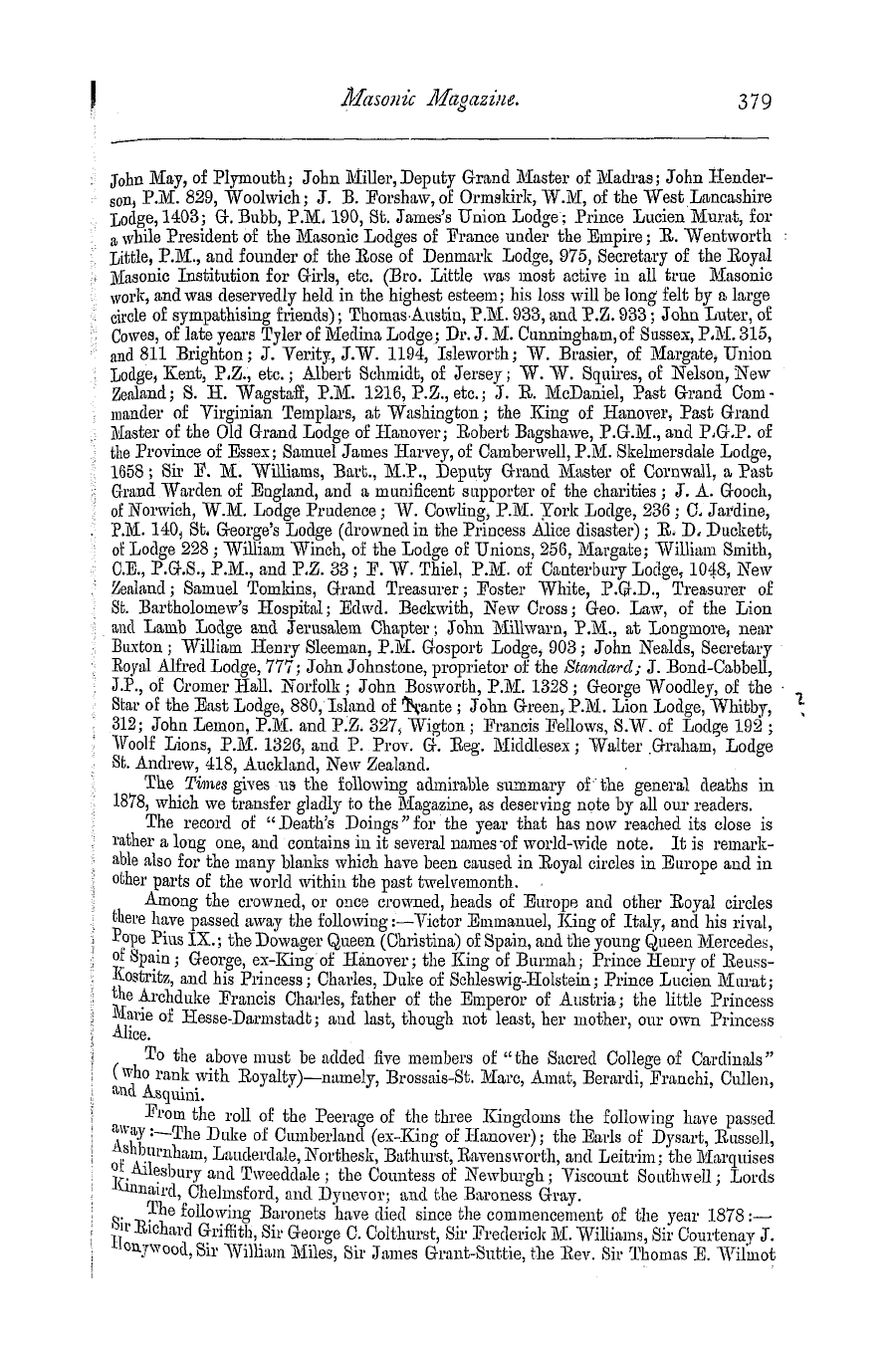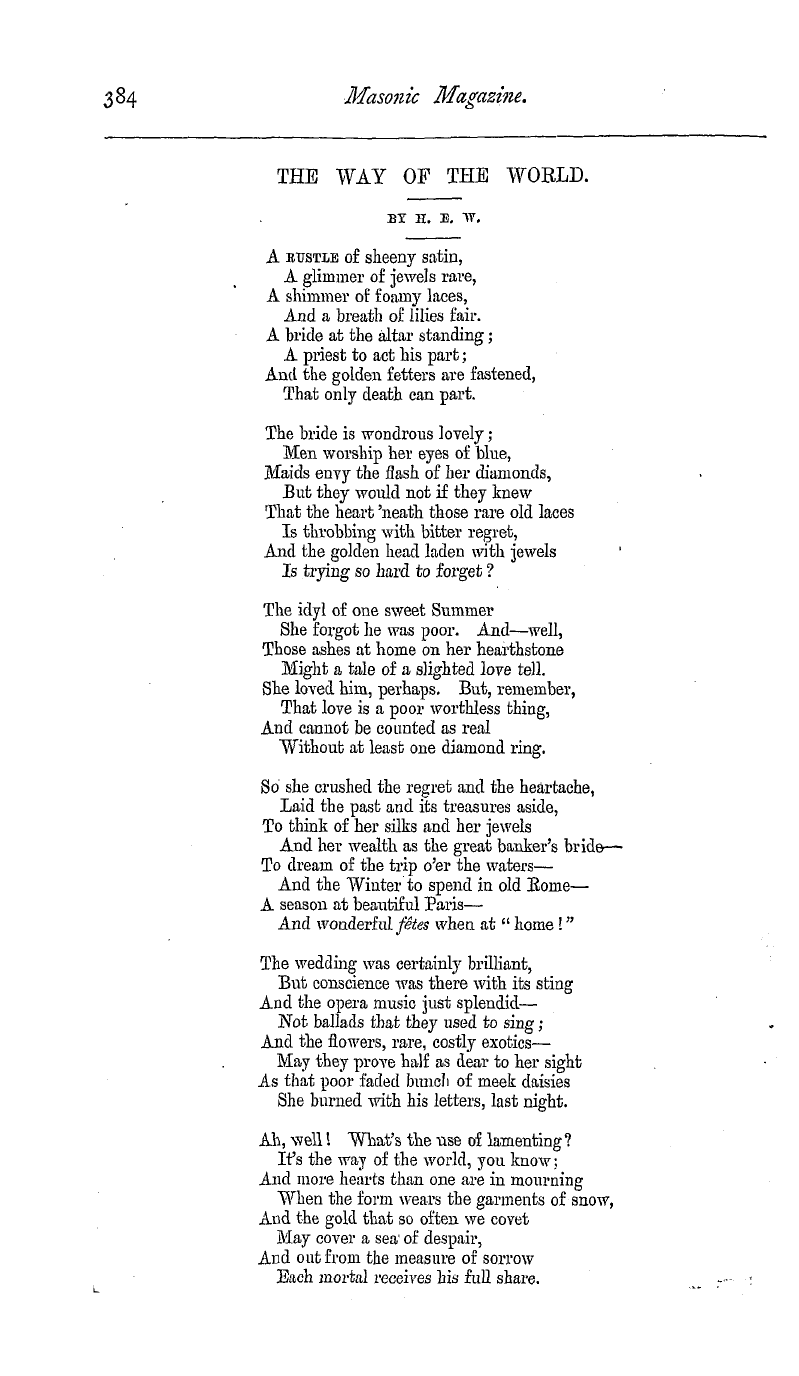-
Articles/Ads
Article GOTHIC ARCHITECTURE.* ← Page 4 of 4
Note: This text has been automatically extracted via Optical Character Recognition (OCR) software.
Gothic Architecture.*
and the front of the convent of the Franciscan friars in the same toivn , Avhich is said to have been the entrance to the palace , bears the greatest resemblance to the Porta Aurea of Diocletian at Spalatro . All these buildings are very far from being in a light or daring style ; they are , on the contrary , extremely heavy . One Aloysius , and the Avell known Boetius , a nath'e of Rome and a Roman senator , AA'hose skill and knoAA'ledge are frequently praised by Cassiodorus , are mentioned as the princi pal
architects of Theodoric ; and this is a strong confirmation of the Goths having no peculiar style of architecture , but that their edifices ivere built by Romans , and in the Roman style . Even all the buildings erected in Europe at a later period , from the seventh to the tenth century , as , for instance , the south gate of the cathedral at Mentz , have , it is true , pillars in recesses , but of a A'ery heavy antiquated form , not agreeing in the least Avith the description of Cassiodorus . The gates of St . Leonard ' s
church at Mentz , on the contrary , and those of the church at Gelnhausen , * as Avell as many other AA'orks Avhich Avere erected toAvards the end of the twelfth or in the beginning of the thirteenth century ( consequentl y fidl six hundred years after the reign of the Goths in Italy ) , appear so completely to correspond Avith that description , that one could fancy Cassiodorus had these buildings before his eyes . His description therefore seems to possess few criteria of inward credibility , and must continue unintelligible until the buildings still extant in Italy , of the time of Theodoric , are more accurately , and more critically , examined and described than they haA'e hitherto been . But AA'ere it even demonstrable that architecture had been at that time such
as the quoted passage of Cassiodorus seems to describe it , yet the art coidd not be ascribed , as Tiraboschi seems to do , to the Goths , who , as Avarlike nomades , only invaded Italy in Theodoric ' s time , —and to whose reign Nurses , the general of the Greek empire , had put an end in the year 552 , their SAvay lowing lasted only fifty-nine years;—but rather to the Byzantine Romans , among Avhoin Ave must search for all that Avas preserved of arts and sciences . The LombardsAA'I IOiu the year 568 overran Italafter the Gothsand whose
, , , y , reign continued to the year 774 , Avere in the habit of building much , and appear to haA'e quickly attained a hi gher degree of civilization than the Goths . The twentyfourth plate of d'A gincourt ' s History of Architecture exhibits the church of St . Julia , near Bergamo , that of St . Michael at Pavia , and the round church of St . Thomas at Bergamo , Avhich are ascribed to the Lombards . As far as it is possible to judge from these plates , Avhich are on a very small scale , and admitting , ivhat hoAvever still
requires proof , that the delineated buildings are reall y the original churches erected by the Lombards , the same remark will apply here winch was made above , respecting the edifices built under tlie sway of the Goths . The Lombards , a rude invading people , adopted the civilized manners of the conquered , as well as their architecture . Considering the very imperfect knowledge of AA'hich we are hitherto in possession , of the style of building of the Lombardsit is certainlerroneous to ascribe to themas but lately
, y , has been done , even down to the eleventh century , and after they had already left the scene for three hundred years , any material influence upon the architecture of the Avest and north of Europe . Still more erroneous is it to give the appellation of Lonibardie to the style of church building which prevailed in France and Germany during the Middle Ages .
Note: This text has been automatically extracted via Optical Character Recognition (OCR) software.
Gothic Architecture.*
and the front of the convent of the Franciscan friars in the same toivn , Avhich is said to have been the entrance to the palace , bears the greatest resemblance to the Porta Aurea of Diocletian at Spalatro . All these buildings are very far from being in a light or daring style ; they are , on the contrary , extremely heavy . One Aloysius , and the Avell known Boetius , a nath'e of Rome and a Roman senator , AA'hose skill and knoAA'ledge are frequently praised by Cassiodorus , are mentioned as the princi pal
architects of Theodoric ; and this is a strong confirmation of the Goths having no peculiar style of architecture , but that their edifices ivere built by Romans , and in the Roman style . Even all the buildings erected in Europe at a later period , from the seventh to the tenth century , as , for instance , the south gate of the cathedral at Mentz , have , it is true , pillars in recesses , but of a A'ery heavy antiquated form , not agreeing in the least Avith the description of Cassiodorus . The gates of St . Leonard ' s
church at Mentz , on the contrary , and those of the church at Gelnhausen , * as Avell as many other AA'orks Avhich Avere erected toAvards the end of the twelfth or in the beginning of the thirteenth century ( consequentl y fidl six hundred years after the reign of the Goths in Italy ) , appear so completely to correspond Avith that description , that one could fancy Cassiodorus had these buildings before his eyes . His description therefore seems to possess few criteria of inward credibility , and must continue unintelligible until the buildings still extant in Italy , of the time of Theodoric , are more accurately , and more critically , examined and described than they haA'e hitherto been . But AA'ere it even demonstrable that architecture had been at that time such
as the quoted passage of Cassiodorus seems to describe it , yet the art coidd not be ascribed , as Tiraboschi seems to do , to the Goths , who , as Avarlike nomades , only invaded Italy in Theodoric ' s time , —and to whose reign Nurses , the general of the Greek empire , had put an end in the year 552 , their SAvay lowing lasted only fifty-nine years;—but rather to the Byzantine Romans , among Avhoin Ave must search for all that Avas preserved of arts and sciences . The LombardsAA'I IOiu the year 568 overran Italafter the Gothsand whose
, , , y , reign continued to the year 774 , Avere in the habit of building much , and appear to haA'e quickly attained a hi gher degree of civilization than the Goths . The twentyfourth plate of d'A gincourt ' s History of Architecture exhibits the church of St . Julia , near Bergamo , that of St . Michael at Pavia , and the round church of St . Thomas at Bergamo , Avhich are ascribed to the Lombards . As far as it is possible to judge from these plates , Avhich are on a very small scale , and admitting , ivhat hoAvever still
requires proof , that the delineated buildings are reall y the original churches erected by the Lombards , the same remark will apply here winch was made above , respecting the edifices built under tlie sway of the Goths . The Lombards , a rude invading people , adopted the civilized manners of the conquered , as well as their architecture . Considering the very imperfect knowledge of AA'hich we are hitherto in possession , of the style of building of the Lombardsit is certainlerroneous to ascribe to themas but lately
, y , has been done , even down to the eleventh century , and after they had already left the scene for three hundred years , any material influence upon the architecture of the Avest and north of Europe . Still more erroneous is it to give the appellation of Lonibardie to the style of church building which prevailed in France and Germany during the Middle Ages .















































